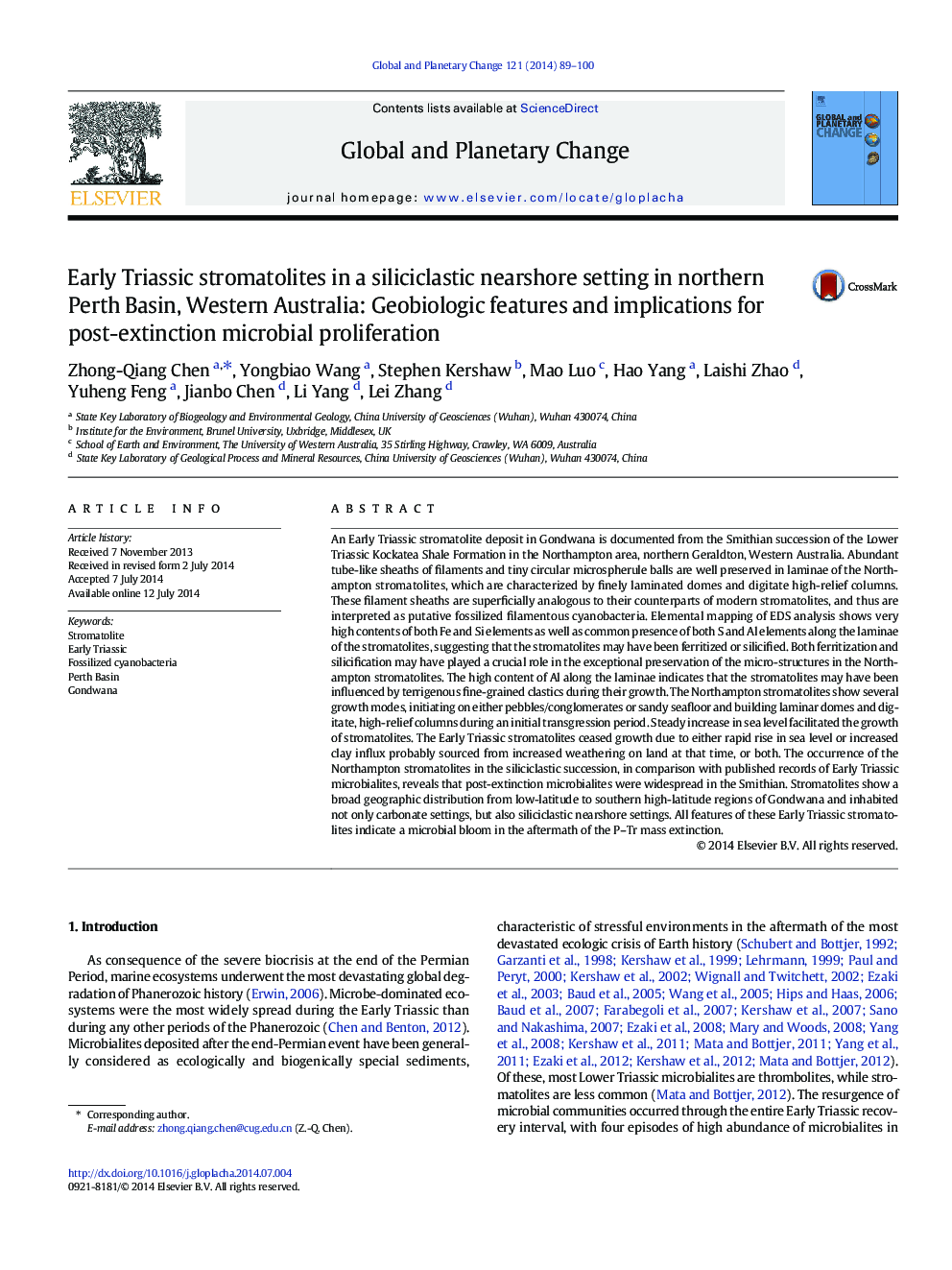| کد مقاله | کد نشریه | سال انتشار | مقاله انگلیسی | نسخه تمام متن |
|---|---|---|---|---|
| 6348218 | 1621660 | 2014 | 12 صفحه PDF | دانلود رایگان |
عنوان انگلیسی مقاله ISI
Early Triassic stromatolites in a siliciclastic nearshore setting in northern Perth Basin, Western Australia: Geobiologic features and implications for post-extinction microbial proliferation
ترجمه فارسی عنوان
استرومااتولیت های اولیه تریاس در یک بستر سیلیکونی در نزدیکی ساحل شمال پرت، استرالیای غربی: ویژگی های ژئو بیولوژیکی و پیامدهای آن برای تکثیر از میان میکروبی پس از انقراض
دانلود مقاله + سفارش ترجمه
دانلود مقاله ISI انگلیسی
رایگان برای ایرانیان
کلمات کلیدی
استروماوتولیت، اوایل تریاس، سانیوباکتریای فسیلی حوض پرت، گاندوانا،
موضوعات مرتبط
مهندسی و علوم پایه
علوم زمین و سیارات
فرآیندهای سطح زمین
چکیده انگلیسی
An Early Triassic stromatolite deposit in Gondwana is documented from the Smithian succession of the Lower Triassic Kockatea Shale Formation in the Northampton area, northern Geraldton, Western Australia. Abundant tube-like sheaths of filaments and tiny circular microspherule balls are well preserved in laminae of the Northampton stromatolites, which are characterized by finely laminated domes and digitate high-relief columns. These filament sheaths are superficially analogous to their counterparts of modern stromatolites, and thus are interpreted as putative fossilized filamentous cyanobacteria. Elemental mapping of EDS analysis shows very high contents of both Fe and Si elements as well as common presence of both S and Al elements along the laminae of the stromatolites, suggesting that the stromatolites may have been ferritized or silicified. Both ferritization and silicification may have played a crucial role in the exceptional preservation of the micro-structures in the Northampton stromatolites. The high content of Al along the laminae indicates that the stromatolites may have been influenced by terrigenous fine-grained clastics during their growth. The Northampton stromatolites show several growth modes, initiating on either pebbles/conglomerates or sandy seafloor and building laminar domes and digitate, high-relief columns during an initial transgression period. Steady increase in sea level facilitated the growth of stromatolites. The Early Triassic stromatolites ceased growth due to either rapid rise in sea level or increased clay influx probably sourced from increased weathering on land at that time, or both. The occurrence of the Northampton stromatolites in the siliciclastic succession, in comparison with published records of Early Triassic microbialites, reveals that post-extinction microbialites were widespread in the Smithian. Stromatolites show a broad geographic distribution from low-latitude to southern high-latitude regions of Gondwana and inhabited not only carbonate settings, but also siliciclastic nearshore settings. All features of these Early Triassic stromatolites indicate a microbial bloom in the aftermath of the P-Tr mass extinction.
ناشر
Database: Elsevier - ScienceDirect (ساینس دایرکت)
Journal: Global and Planetary Change - Volume 121, October 2014, Pages 89-100
Journal: Global and Planetary Change - Volume 121, October 2014, Pages 89-100
نویسندگان
Zhong-Qiang Chen, Yongbiao Wang, Stephen Kershaw, Mao Luo, Hao Yang, Laishi Zhao, Yuheng Feng, Jianbo Chen, Li Yang, Lei Zhang,
